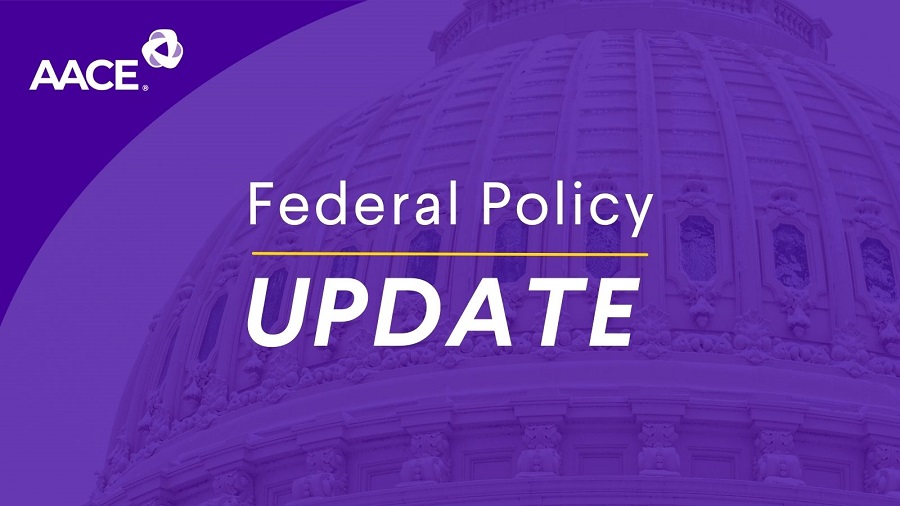
By: Julius W. Hobson, Jr.
CMS--Biosimilars: Interchangeable Products May Increase Patient Access
Depending on state pharmacy laws, you may substitute an interchangeable biosimilar product at the pharmacy, much like substituting a generic for a brand-name drug. This helps increase patient access to biologics and may reduce patient costs. Learn more about Interchangeable Biological Products from the FDA. Bookmark FDA’s Biosimilars webpage and materials for health care providers and patients.
Additional FDA resources you may find helpful:
CMS: Medicare, Medicaid, & CHIP Enrollment
The Centers for Medicare & Medicaid Services (CMS) released the latest enrollment figures for Medicare, Medicaid, and the Children’s Health Insurance Program (CHIP). These programs serve as key connectors to care for more millions of Americans.
Medicare
As of February 2022, over 64.2M of people are enrolled in Medicare. This is a decrease of 6K since the last report.
- 34.9M are enrolled in Original Medicare.
- 29.4M are enrolled in Medicare Advantage or other health plans. This includes enrollment in Medicare Advantage plans with and without prescription drug coverage.
- 49.9M are enrolled in Medicare Part D. This includes enrollment in stand-alone prescription drug plans as well as Medicare Advantage plans that offer prescription drug coverage.
Over 11.9 million individuals are dually eligible for Medicare and Medicaid, so are counted in the enrollment figures for both programs.
Detailed enrollment data can be viewed here: https://data.cms.gov/summary-statistics-on-beneficiary-enrollment/medicare-and-medicaid-reports/medicare-monthly-enrollment
Medicaid and Children’s Health Insurance Program (CHIP)
As of February 2022, 87,384,715 of people are enrolled in Medicaid and CHIP. This is an increase of 430,006 since the last report.
- 80,386,081 are enrolled in Medicaid
- 6,998,634 are enrolled in CHIP
For more information on Medicaid/CHIP enrollment, including enrollment trends, visit https://www.medicaid.gov/medicaid/program-information/medicaid-chip-enrollment-data/medicaid-and-chip-enrollment-trend-snapshot/index.html
House Republican Health Policy Proposals
There is a general assumption Republicans will win back the U.S. House of Representatives in November’s elections. The House GOP has a group called the Healthy Future Task Force which just released "Solutions to Modernize Health Care", intended "to harness technological innovations to improve Americans’ lives and save taxpayer dollars". Here is a link to their proposals: https://www.republicanleader.gov/guthrie-buchanan-announce-healthy-future-task-force-solutions-to-modernize-health-care/
2022 Social Security and Medicare Trustees Reports
On June 2, 2022, the Social Security and Medicare Boards of Trustees, the U.S. Department of the Treasury—joined by Departments of Health and Human Services and Labor, the Centers for Medicare & Medicaid Services, and the Social Security Administration—released the annual Social Security and Medicare Trustees Reports. Based on the Trustees’ best estimates, the 2022 reports determine:
- The Old-Age and Survivors Insurance (OASI) Trust Fund, which pays retirement and survivors benefits, will be able to pay scheduled benefits on a timely basis until 2034, one year later than reported last 1 In addition to the results summarized in this document under the best-estimate, intermediate set of assumptions, the Trustees Reports include results illustrating ranges of uncertainty in measures of trust fund actuarial status. One approach develops results under low-cost and high-cost alternative sets of assumptions. A second approach conducts an analysis of the sensitivity of the projection to different assumptions by varying one assumption parameter at a time. year. At that time, the fund’s reserves will become depleted and continuing tax income will be sufficient to pay 77 percent of scheduled benefits.
- The OASI and DI funds are separate entities under law. The report also presents information that combines the reserves of these two funds in order to illustrate the actuarial status of the Social Security program as a whole. The hypothetical combined OASI and DI funds would be able to pay scheduled benefits on a timely basis until 2035, one year later than reported last year. At that time, the combined funds’ reserves will become depleted and continuing tax income will be sufficient to pay 80 percent of scheduled benefits.
- The Hospital Insurance (HI) Trust Fund, or Medicare Part A, which helps pay for services such as inpatient hospital care, will be able to pay scheduled benefits until 2028, two years later than reported last year. At that time, the fund’s reserves will become depleted and continuing total program income will be sufficient to pay 90 percent of total scheduled benefits.
- For the sixth consecutive year, the Trustees are issuing a determination of projected excess general revenue Medicare funding, as is required by law whenever annual tax and premium revenues of the combined Medicare funds will be below 55 percent of projected combined annual outlays within the next 7 fiscal years. Under the law, two such consecutive determinations of projected excess general revenue constitute a "Medicare funding warning." Under current law and the Trustees’ projections, such determinations and warnings will recur every year through the 75-year projection period.
Senate COVID-19 Legislation
The original Senate COVID-19 relief bill was scored at $10 billion. It contained budget offsets to cover the costs. However, subsequent legislation used those budget offsets which now requires legislators to develop a new budget offsets.
May Employment Report
On June 3, 2022, the Bureau of Labor Statistics released the "Employment Situation—May 2022", which shows nonfarm payroll employment rose by 390,000 in May, and the unemployment rate remained at 3.6 percent. Employment in health care rose 28.3 percent. Elsewhere in health care, employment in May:
- Physician offices: +5.8%
- Dentist offices: +0.9%
- Other health practitioners: -3.9%
- Outpatient care centers: +1.4
- Hospitals: +16.3%
